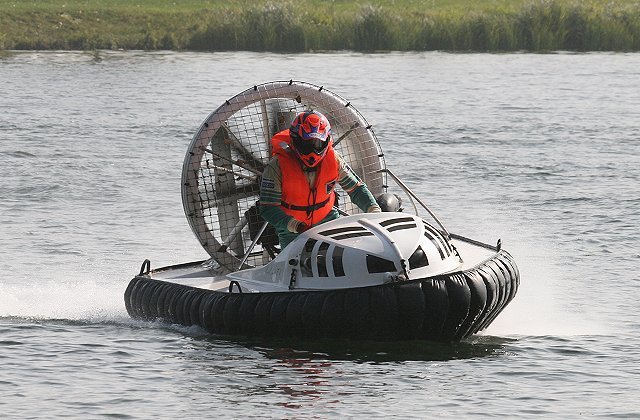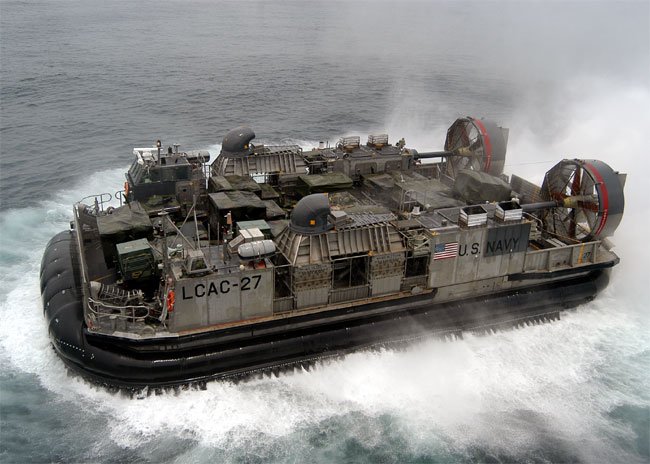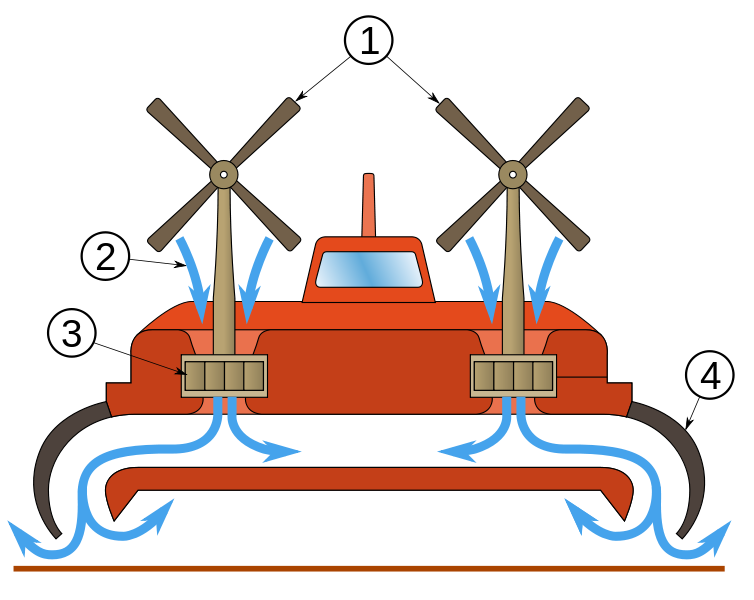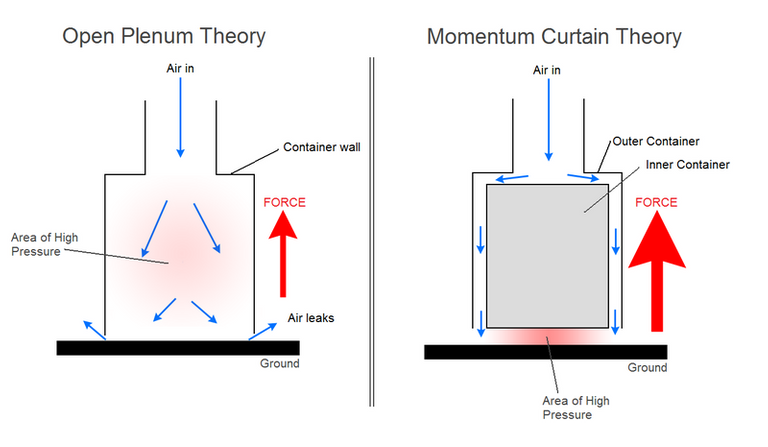The earth in her beauty is filled with awesome, beautiful and extraordinary things that are available for our consumption. By consumption, I mean eating or applying to our daily lives to make it easier. The beauty of nature coupled with the genius of technology gives us solutions to a lot of things and also offers improvements to existing ones. Simply put, nature and technology are meant to go hand in hand and that is what man has been doing for centuries. Using the gifts of nature to create the things we need and also harnessing the power locked in these things to make things work.
A while ago, I wrote about how air (one of the beautiful things we have been gifted by nature) can be used to break rocks. Merely looking at the statement, it would be as an exaggeration but no it is not! The power of air is sometimes underestimated but if channeled using the right mechanisms, air can do a lot of heavy work for us. A good friend of mine @real2josh did an article on the wonders that air present and I can assure you it is a good read. Check it out here.
From its use in automobiles for tyres or mixture with fuel for combustion to its great importance in the flight of aircraft (airplanes or helicopters). If you didn’t know, the flight of these aircraft is made possible by manipulation of air around these crafts. Directing air with the use of fans helps us keep the ventilation of our homes. Do I need to say more about how air is such a beauty? Maybe not.

How about a ride? Image source: Wikimedia commons
Now lets do some physics. One of the fundamental things learnt in physics is pressure. Pressure is simply the force exerted by a body (or fluid or whatever) per unit area of application. What this simply means is that if I apply a force of 10N (N= Newton which is the unit of force) on a 1m2 surface, I have applied a pressure of 10 Newton per Meter square (N/m2) to the body.
Pressure can also be denoted in other units such as PSI (Pounds per Square Inch), Bar, Pascal etc. It is still pressure although it cannot be used to measure the amount of pressure exerted on employees by employer lol.
As a fluid, air exerts a level of pressure to whatever body it is acting on. Take for instance the automobile tyre, the pressure of the air inside it is what makes the tyre steady. To make it exert more pressure on the tyre to be able to accommodate the weight of the vehicle, the air is compressed into it, that way allowing for the air molecules to exert a force per unit area (pressure) that can withstand the vehicle weight. If by any means the air is made to escape either by a puncture or loosening the valve, the rubber gives way and succumbs to the weight of the vehicle.
Talking about vehicles, although the word is widely used for automobiles on land, a vehicle is simply defined by Merriam Webster dictionary as a means by which something (people or goods) is carried or transported. In this vein, we can say that an airplane is a vehicle and likewise a boat.
These vehicles are characterized by the surface they move on, what I mean is, a motor vehicle moves on land, an airplane on air while a boat or ship does its movement on water. Finding a car on water would only mean one of two things, it is either the car is on a ship or it fell into the water and definitely will sink. Likewise, a boat or ship is of no importance on land, it cannot move except being carried by another vehicle as it is not made for land.
Quite surprisingly however is the fact that there are vehicles that can move on land as well as on water. As a matter of fact, they can move on other surfaces such as ice, mud or grass (they don’t climb trees). To some extent, they are even considered to be flying. Wait a minute, what vehicle is that? You might ask, well, I expect some of my readers to know what vehicle I am talking about and if you don’t, just wait a little longer.
The vehicle I am talking about is called the hovercraft. Just as the name implies, the hovercraft hovers over whatever surface it is moving on. To hover simply means to stay suspended over a surface or thing without any physical contact. A bird hovers (in the air) around its prey and likewise do helicopters or other similar aircraft hover. Now, if hovering requires no physical contact between the surfaces, how then does this vehicle do that? The secret lies in air

U.S Navy Hovercraft. Image source: Wikimedia commons public domain.
Alright, lets talk about the vehicle.
Animals such as frogs are considered as amphibians simply because they have the ability to live (and move) on water and on land. This is same with the hovercraft as it has the ability to move both on water and on land. This vehicle has been around for years and has found application in various sectors such as transportation and the military.
In order to move from land to water or vice versa, ships would need to dock at a harbor which is still water at a depth and the passengers would have to get to land or back to sea using small boats or platforms that run to the ship. Also, to safe guard the ships from drifting away in the water, it would be anchored on the harbor or else, the ship could be lost.
All these and more are what the hovercraft has over the ships and water ferries as it can move from water to land smoothly and because it is on land, there is no fear of drifting away unguarded on water.
This ability to move seamlessly from water to land is one of its greatest advantages. The military uses it to transport personnel and artillery and also navigate from water to land and back without any hitches and that is what makes it have the upper hand over cars because they cannot go into the sea and ships, because they cannot move on land. More of like having a taste of all worlds. The hover craft is a plane, a boat, an helicopter and a motor vehicle in one. A full package!
Lets see how this beautiful machine is able to achieve such feats.
One of the things a motor vehicle or a water vessel experiences when moving on land or on sea respectively is friction. Friction occurs as a resistance to motion between the surface (land or sea) and the vehicle wheel or vessel body. Although this friction helps when it comes to stopping, it also acts as a resistance to movement. Overall, friction is not a bad guy but in this context of affecting movement, I would give it a bad guy badge. How can we then have a vehicle that does not encounter friction? Well, the trick is to find a way to make it move without contact with the ground.
Having no contact with the ground is the point behind technology such as maglev (magnetic levitation) which does this by applying the principle of magnetism to the base of the vehicle (train) and the ground. Quite amazingly, the hovercraft also overcomes friction but in another simpler and less complicated manner.
The hovercraft is referred to as an Air-Cushion Vehicle (ACV) based on the fact that it uses a layer of air underneath it to hover above the ground (or water). It is more of like flying but just a few inches above the ground but enough to allow movement (isn’t that cool already).
In order to achieve this levitation, the hovercraft is equipped with fans that blow air under it and thus elevate the vehicle to a height where another fan manipulates air from the behind to navigate forward. The fan is not as the ones we have in our homes but heavy duty fans that are capable of rotating at high speeds and blowing a large amount of air at once.
The fans powered by powerful engines (diesel or turbine engines) that are capable of delivering high rotation and are situated at strategic points (usually in the middle) on the vehicle to achieve good lift and movement. The fan(s) that are used for lift are positioned facing downwards. As the engines are started, the fans blow air under the vehicle and (recall what we discussed earlier) the air pressure pushes it up to a good height. The other fans (or propellers) are situated at the rear of the vehicle and are employed for navigation of the hovercraft. Simple right? I bet it also sounds cool.

schematic of the hovercraft 1. Propellers 2. Air 3. Fan 4. Flexible skirt
image source: wikimedia commonsunder the Creative Commons Attribution-Share Alike 3.0 Unported license.
You might be wondering; how does the air push the craft up if the sides are open. Well no, the sides are not open. The hovercraft makes use of something known as the skirt or curtain to trap the air under the craft and allow for the pressure to build up (with little air escaping) and lift the craft. Just like a lady’s skirt, the skirt runs all the over the base of the craft and it is made of rubber. When the fan pushes air downwards, the air is trapped underneath which provides cushion under the craft making it possible for the craft to literarily float (or fly or hover) on land or sea.
Being around for years now (the first hover craft patented in 1965), the hover craft has two basic designs which follow the same principle. The first design is the open plenum design which simply involves air being blown under the craft as required but because the space underneath the craft is empty, a lot of air would be needed to fill up that space and maintain the pressure thus, the engine used has to be powerful enough to provide and maintain the air pressure.
The second design known as the peripheral jet design and it has included to the initial design, an inner shell right under the vessel. This shell allows for the air to circulate between the outer and inner shell thereby causing what is known as a “momentum curtain”. When the fan blows the air downwards, the air moves through the sides of the inner shell and straight under the craft. The air directly under the craft is then trapped and lifts it up as a result of its pressure while the fan circulates air around the inner core. The peripheral jet design has proven to be more efficient than the open plenum because it minimizes air wastage and thus an engine with the same power as in the open plenum design would be able to generate more lift for the craft.
People who drive hovercrafts are regarded as pilots too. Well, that’s because literally, they fly. But I wonder if they can be called sailors and drivers at the same time. With rudders attached behind the fans at the rear of the hovercraft, the pilot can navigate by simply changing the direction of the air flow (now that’s more of like piloting).
As earlier stated, one of the advantages of the hovercraft is that it can move, land and start off on any surface. It can also be used to carry heavy materials such as it is used in the military to carry their cargo and also to transport large numbers of people at once from one place to another. Also, the fact that their mode of operation is not farfetched and the engines they use are not sophisticated, they are cheaper than some other crafts such as the helicopters. Their ability to move without worrying about land (or water) friction is a plus!
However, hovercrafts are not so much of a darling because of their expensive initial and maintenance costs (the skirts were susceptible to wear) compared to other water vessels. Because of the need to constantly supply air, the hovercrafts are not as stealthy to be used for covert military missions as the fans blow air with such loud roar. Piloting the hovercraft is not also an easy nut to crack as it requires manipulation of air flow (just like in the helicopters). Also, the engines required to run the hovercrafts consume quite a lot of fuel
Well, maybe because of these disadvantages and the introduction of faster boats at relatively lower costs, the hovercraft has been pushed to the side lines. With its major use being in recreational sports where small (one or two passenger) hovercrafts are used for racing.
CONCLUSION
Invented by Sir Chrstopher Cockerel, the hovercraft is a simple illustration of the wonderful things we can do with air if we can only channel it correctly. Done the right way, the power of air can be used to do wonders and unlock amazing possibilities. Hopefully in the nearest future, technology as in this one would change the face of transportation in the world.
Did you know you can make your own simple hovercraft? Well, with simple materials such as a CD, a balloon, glue and a bottle cover. Check out this video to learn!
REFERENCES
Hovercraft
How does a hovercraft hover
Hovercraft: a multi-terrain vehicle
How does a hovercraft work
Vehicles that sail on water and land


I really enjoy the contents of your post,
Your work is great
yeah, obviously, it was too interesting that you read it in less than a minute
Lol
hahahaha savage
Lol 😂
Hello @rharphelle
Man this is epic! This is my first time to ever come across articles on hovercraft. I am particularly intrigued how this machine overcomes resistance on land. I am sure none of this is in Nigeria. Very detailed. Your writing style is top-notch too. Kudos
Regards
@eurogee of @euronation and @steemstem communities
Thanks for your kind comments always. I am glad my writing connects to my audience.
Thanks bro
The importance of air is felt in different in various applications all around technology... Take for instance the submarine and like you stated the plane.
I'm sure at the rate with which technology is growing, the cons of this machine will be overcome in the very near future.
You are right. We can only wait
prior to this innovation, I only had this thought in my imaginations. we will definitely get to a time where we can use the hovercraft like every other normal automobile out there. well articulated @rharphelle
Funny enough, the hovercraft has been around for long just like i stated earlier. Maybe, just maybe we would see it surface again with new modifications.
The height technology is aiming at these days is very encouraging. It's a good thing to have guys like you to educate us on it.
Nice Post.
Thank you for your nice comment sir.
Sometimes ago, I read that there are recent hovercrafts with very much lesser disadvantages than the former ones..., and I believe in the near future, there will be even bigger improvements.
Thanks for taking me through the physics behind the hovercraft...., I have just earned more bragging rights 😊
Excuse me ma'am, what are you bragging about and to whom are you bragging....?
Is it your brag?
Epp me ask him o, is it ur brag, ehn
Youre welcome ma'am.
By the way, i have not seen anything from you in a while. Are you planning to drop a bombshell?
Work has really been usurping my free time..., plus I was down for a while..., but something is cooking already...., dunno if it's a bombshell tho☺
Technology is life my dear ....this is really amazing the way it works
Hope things like this be invented in my .own par of the world
Seeing it in new modification will be superberb
Fantastic post. I thought it was going to be an engine breakdown at first. I love things like this. Yoy made it look likr a documentary.
Good puns too.
if i break down all the engines, there would be none to drive around.
thanks for reading
Epic reply as usual. 😅
You have really done well by explaining this. Nice write up bro and also looking forward to learn from your next post as I have gained a lot from this post.
I would have loved to own a Hovercraft due to its fascinating principles of operation, but the cost obviously is a constrain. Great work man. The explicit nature of your articles is what I admire.
Woops " Air-Cushion Vehicle (ACV) " - that's a new one
I wanted to mention that how is the air pressure maintained with possibility of a lot escaping but I guess the skirt saved us..
Nice input you've here